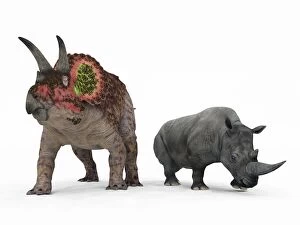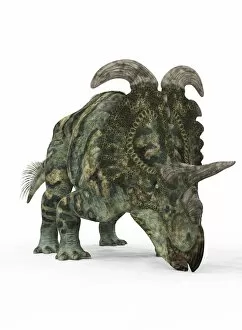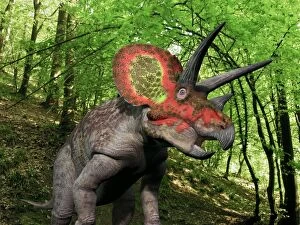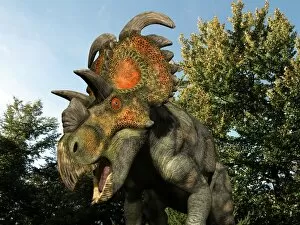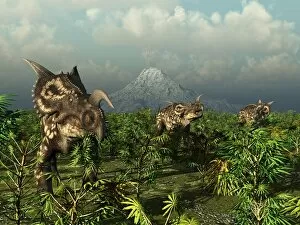Cerapods Collection
Cerapods, the fascinating group of horned dinosaurs, bear a striking resemblance to their modern-day counterpart, the rhino
All Professionally Made to Order for Quick Shipping
Cerapods, the fascinating group of horned dinosaurs, bear a striking resemblance to their modern-day counterpart, the rhino. Just like rhinos, these ancient creatures possessed formidable horns and shared similar body structures. Among them was the Albertaceratops dinosaur, known for its large nasal horn that resembled a rhino's. Another member of this family was the Zuniceratops dinosaur which also sported an impressive horn on its snout. One cannot help but draw parallels between Cerapods and rhinos when observing the Triceratops dinosaur. With its three distinctive horns - one on its nose and two above its eyes - it is reminiscent of a powerful rhinoceros ready to charge. Similarly, Nedoceratops and Diabloceratops displayed intricate head adornments resembling those found in both triceratops and rhinos. The Torosaurus dinosaur boasted an elongated frill at the back of its skull much like that seen in some species of rhinos today. And let's not forget about Pentaceratops; with five prominent horns adorning its massive head shield, it could easily be mistaken for a distant relative of both the triceratops and a mighty charging rhino. Interestingly enough, even Einiosaurus showcased similarities with our beloved modern-day herbivore: as it roamed prehistoric lands with curved horns jutting from either side of its head just like those seen on certain species of today's majestic African Rhinoceroses.


